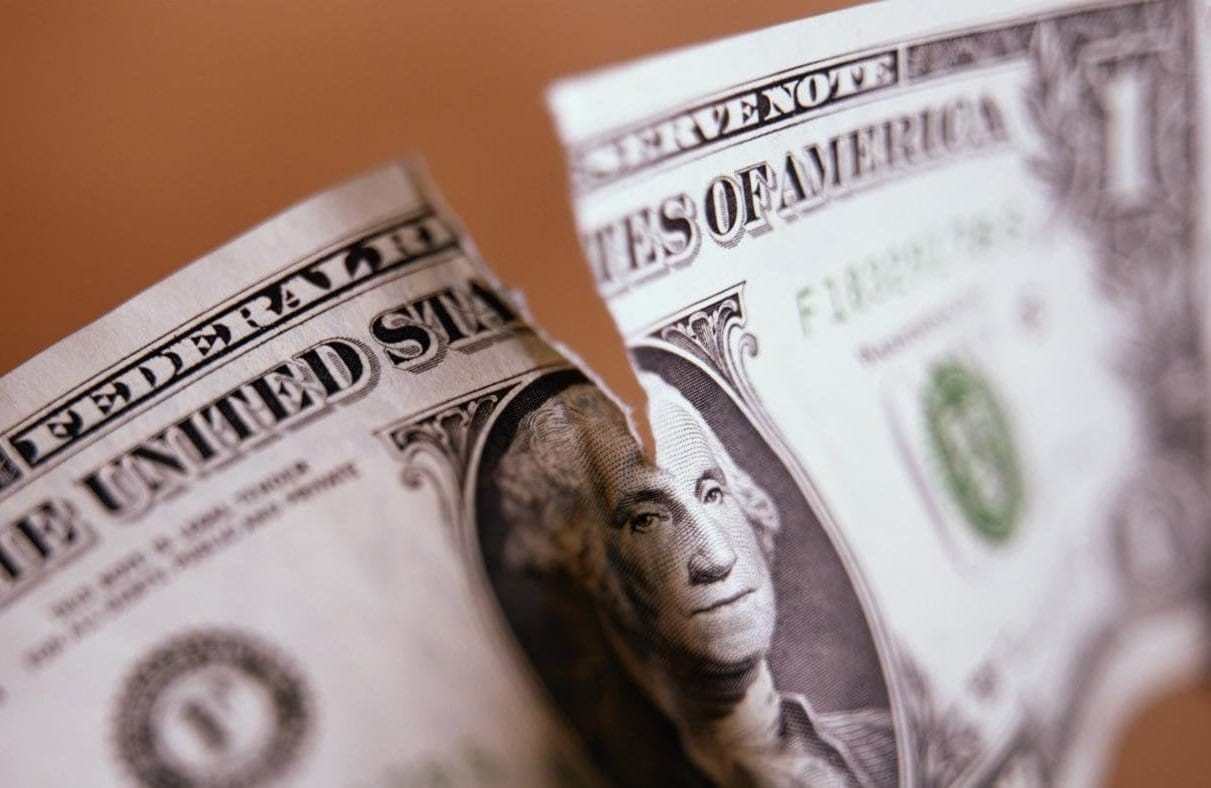America’s National Debt Crisis Might Just Be Beginning: As of the final day of January, the United States’ national debt sat at $29,912,456. That’s almost $90,000 per citizen and $239,087 per taxpayer. These numbers are rapidly rising and despite promises from successive presidents to bring that figure down, the figure increased at an even more rapid rate over the last two years as the federal government implemented multiple federal COVID relief packages.
With a budget deficit of $2.8 trillion – the second-largest deficit in history – and inflation at a forty-year high, there are questions to be asked about America’s national debt crisis.
At present, the national debt in relation to GDP is 130.65%. That’s up from 108.46% in 2019. By 2020 – the year the COVID-19 pandemic took hold – that figure had jumped dramatically to 133.92% and has barely dipped since then.
America Among Highest COVID-19 Fiscal Responders
A study of 166 countries revealed how the United States ranked among the largest fiscal responders to COVID-19 out of the world’s industrialized countries.
Researchers showed how the United States had the second largest fiscal response out of all industrialized countries, only slightly behind Singapore.
A 2021 paper showed how Singapore’s stimulus spending as a percentage of GDP was 29%, with the United States slightly behind at 27%. For comparison, the United Kingdom – the fifth largest economy in the world – didn’t even rank in the top 10.
The U.S. offered more direct cash to households, while many European countries including the United Kingdom relied on loan guarantees and furlough measures to maintain jobs and help households stay on top of their debts and outgoings.
The paper argues that the decision to provide direct cash injections to households, as opposed to a more European model, could pose a risk for the future. With the United States dealing with high inflation and growing national debt, economic recovery could be substantially slower than America’s allies overseas.
Another report by the Brookings Institution from October 2021 argues that COVID “left a legacy of record-high debt and shifted the trade-offs between benefits and costs of accumulating government debt.” The authors argue that economies like the United States that have seen rocketing debt may need to look to “alternatives for borrowing, including better spending and revenue policies, in an improved institutional environment.”
However, President Joe Biden and Congressional Democrats have vowed to continue efforts to pass further unprecedented spending plans, including the $1.75 trillion Build Back Better package.
Can the U.S. Afford Higher Interest Rates?
In response to an “overheating” economy, which means that the productive capacity is incapable of meeting the level of domestic demand, the Federal Reserve has announced plans to increase interest rates by as much as 300%.
The decision means that loan and mortgage interest rates will rise substantially, helping cool the inflation crisis. However, it could take several months or even years before the effects are felt.
It remains unclear whether the United States can truly afford higher interest rates with record-high national debt.
“What makes this situation most disturbing is that the current debt interest level is during a period of historically low-interest rates,” Sheldon H. Jacobson, PH.D, wrote in The Hill.
Jacobson, a researcher at the University of Illinois, added that it does not require advanced economics to see that higher interest rates may suppress inflation, but with soaring national debt “they are an anathema to the economic stability of the nation.”
Higher interest rates in an economy like this, he argues, mean that every government program is put at risk and it places limitations on any future investments needed to address unexpected problems.
A combination of Build Back Better and higher inflation rates could make for a rocky 2022.
Jack Buckby is a British author, counter-extremism researcher, and journalist based in New York. Reporting on the U.K., Europe, and the U.S., he works to analyze and understand left-wing and right-wing radicalization, and report on Western governments’ approaches to the pressing issues of today. His books and research papers explore these themes and propose pragmatic solutions to our increasingly polarized society.

